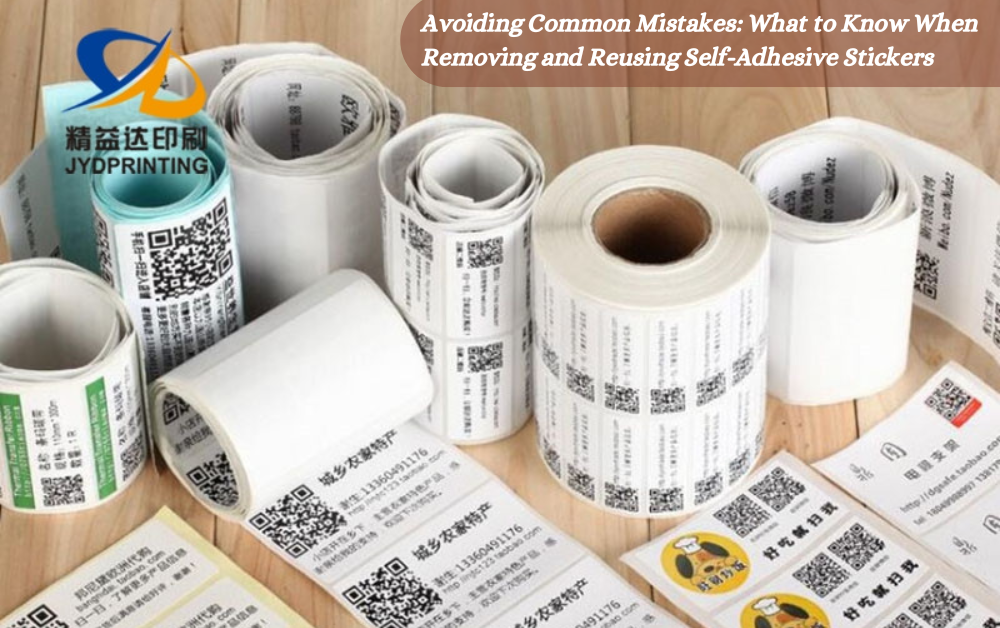Introduction
Welcome to a practical guide that will help you navigate the world of self-adhesive stickers with ease. In this blog post, we’ll focus on a crucial aspect often overlooked: removing and reusing self-adhesive stickers. Whether you want to reposition a sticker, replace it, or simply remove it without leaving a sticky residue, we’ve got you covered. No need for complex terminology; we’ll explain everything in simple, everyday language.
Why Learn About Removing and Reusing Stickers
The Art of Versatility
Self-adhesive stickers are incredibly versatile, but their true potential lies in their reusability. By understanding how to remove and reuse them correctly, you can save money and reduce waste. Let’s explore the dos and don’ts of sticker management.
When it comes to stickers, they’re not just one-time-use decorations. These little wonders can have a second life, and by learning how to remove and reuse them properly, you’ll unlock a world of possibilities.
Removing Stickers Safely
The Gentle Approach
Removing stickers without damaging surfaces can be challenging, but it’s entirely doable. Here’s how to do it safely:
- Gather Your Tools: You’ll need a few basic tools for this task. Grab a hairdryer or a heat gun, a plastic card (like a credit card), and some adhesive remover (or rubbing alcohol).
- Apply Heat: Start by using the hairdryer or heat gun to warm up the sticker. The heat softens the adhesive, making it easier to remove. Make sure to keep the heat source a few inches away from the sticker to avoid any damage.
- Peel Carefully: Once the sticker is warmed up, use the plastic card to gently lift a corner. Gradually peel it off, keeping the angle low to minimize any adhesive residue.
- Remove Residue: If you do find some adhesive residue left behind, don’t fret. Apply a small amount of adhesive remover or rubbing alcohol to a cloth and gently rub the area until it’s clean. Your surface should be as good as new.
Reusing Stickers Effectively
The Second Life
Reusing stickers is a sustainable choice, but it requires attention to detail. Follow these steps to make the most of your stickers:
- Clean the Sticker: Before you even think about reusing a sticker, make sure it’s squeaky clean. Remove any dirt, dust, or previous adhesive residue. If necessary, use a mild soap and water solution, but ensure the sticker is completely dry before reuse.
- Reapply Gently: Position the sticker where you want it to be and start from one end. Gradually smooth it down, avoiding air bubbles by applying even pressure.
- Use a Barrier: If you’re concerned about adhesive residue or want the flexibility to reposition the sticker later, consider using a barrier. Place wax paper or parchment paper between the sticker and the surface. This allows for easy removal and repositioning without leaving any marks.
Common Mistakes to Avoid
Pitfalls and How to Steer Clear
Avoid these common mistakes when dealing with self-adhesive stickers:
- Rushing the Removal: Impatience can lead to damaged stickers or sticky residue. Take your time when removing stickers, and remember that a little patience goes a long way.
- Using Harsh Chemicals: Steer clear of harsh chemicals like acetone or nail polish remover. These can not only damage the surfaces you’re working on but also harm the sticker material itself.
- Skipping Cleaning: Reusing stickers on a dirty surface is a recipe for reduced adhesive quality. Always clean and dry both the sticker and the target surface before reapplication.
- Overstretching the Sticker: When removing a sticker, avoid pulling too hard, as this can stretch it. A stretched sticker is challenging to reapply smoothly, so take it slow and steady.
Practical Uses for Reusable Stickers
Beyond the Basics
Reusable stickers have numerous applications beyond the obvious. Here are some creative uses:
- Educational Tools: Create reusable educational materials for kids, such as flashcards or learning charts. When they’re done using them, wipe them clean, and they’re ready for the next lesson.
- Event Planning: Design reusable event signage or decorations that can be easily updated for future events. No need to print new signs each time.
- Organizational Labels: Use reusable stickers to label containers, shelves, or file folders that frequently change contents. It’s an efficient way to stay organized without the hassle of peeling off old labels and applying new ones.
Conclusion
Removing and reusing self-adhesive stickers doesn’t have to be complicated. By following simple steps and avoiding common mistakes, you can make the most of your stickers while reducing waste. So, go ahead, confidently remove and reuse those stickers, and explore the endless possibilities they offer in personalization and sustainability. With these newfound skills, you’ll be the sticker master in no time!

